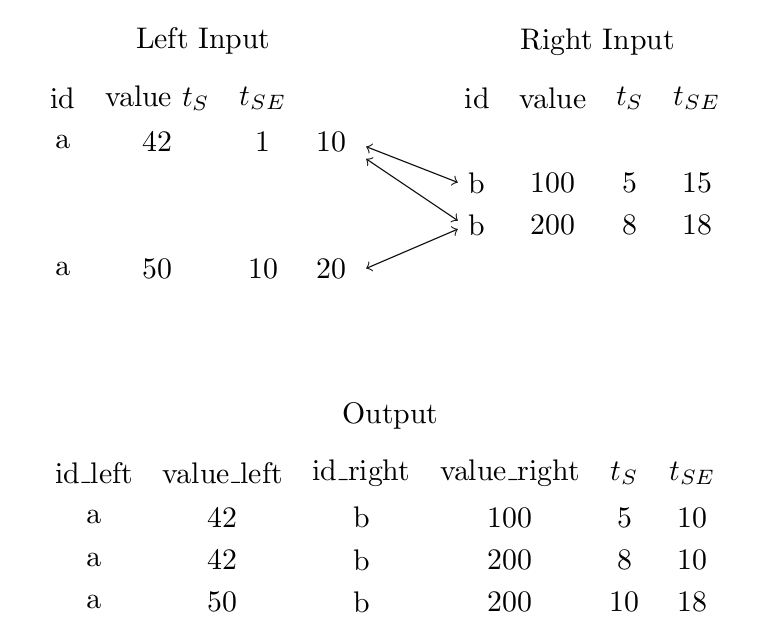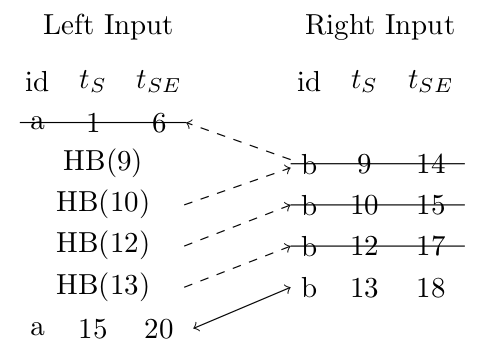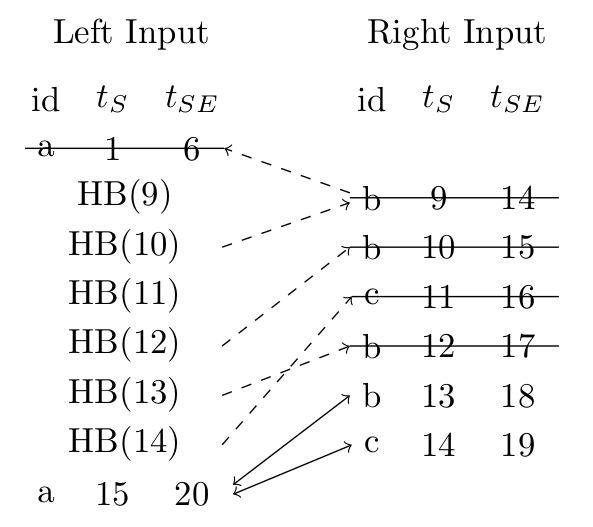...
Here, the later element on the left is joined with "not-the-newest" element on the right, even though the element size on the right is set to one. Here we can see, that the elements on the left are joined with the newest possible element of the other side.
Why is there no end timestamp?
The following example shows the creation of end timestamps while using an element window.
As can be seen, the end timestamp is set here. In the result elements, the time intervals of the first two elements are overlapping, indicating that at the point in time 8 and 9 there are two results, even though the element window should only create one result for each time instance. That's why the end timestamp is set to an "unknown" infinity by default.
Using Heartbeats
You can use heartbeats to clean up the SweepAreas of the Element Join earlier to reduce memory consumption. The heartbeats do not change the query results. The cleanup in a Element Join with element size set to one can be seen in the Figure below:
Grouping / Partitions
You can use groups to have the count of n elements for each group. Here's an example with element size set to one (for bow sides), grouping by the id and with heartbeats:


